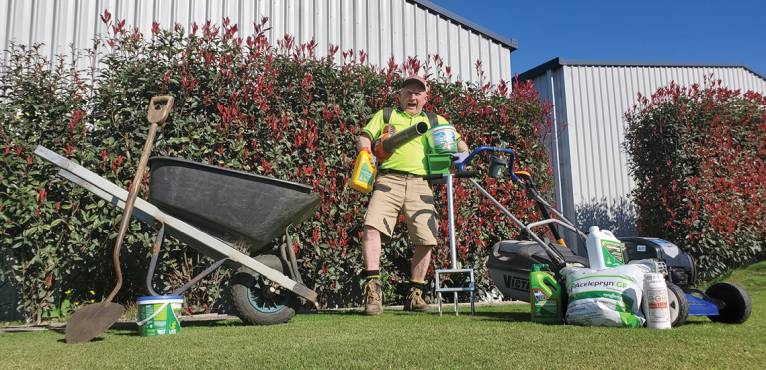Spring Lawn Care - Preparing Your Lawn For Summer

Spring is now here, and it is one of the best times throughout the year to lay a new lawn! The temperatures are just right, and the lawn will be actively growing for a quicker establishment.
Why lay a new lawn in spring?

- Less irrigation is required as temperatures are not too hot, reducing the amount of heat related evaporation.
- Install turf now for an established lawn for summer.
- The lawn will be actively growing, helping your turf establish a deep root system ready for summer.
My lawn is already established, what else should I do?
It's easy to get excited about all the things you might want to do to have your lawn the envy of the street, but it's important that you don't act too early. We recommend doing a few simple spring lawn care activities to ensure your grass will grow at its healthiest throughout the coming months.
- Remove thatch - Removing dead material from the lawn profile will help the living plant to absorb all the available moisture.
- Remove weeds - If you've got any, then pull them out by hand. If you don't have any, apply a pre-emergent herbicide so you don't get any! Read our guide on identifying and treating weeds.
- Aeration - Improving the ability for water to penetrate to the roots will be important. We discuss this topic in more details further below.
- Water effectively - When you can water, do so for longer, less frequently. Encourage deeper roots that can delve deeper into the soil to find moisture. This will allow your lawn to stay hydrated for longer, even if there has been an extended period without rain. Read our guide on watering your lawn.
- Apply a wetting agent - Hydrophobic soil is caused by the decomposition of organic matter, which leaves a wax like substance forming a coating on soil particles. A wetting agent like Lawn Soaker will break down this coating allow water to penetrate.
Aerate Your Lawn
Aerating your soil is another great spring lawn care activity to do! Aerating your soil will increase the amount of air, water, and nutrients it receives. This strengthens grass roots and helps create a healthier lawn. Aeration decreases thatch and compaction and should be carried out annually in high traffic areas and on hard lawns. Lawns with poorer soil can benefit from aeration too.
To aerate your lawn, you could simply use aerating sandals, or drive a garden fork into the soil and give it a wiggle to help decompact the soil base. You can also do this with a core aerator which will remove plugs of soil at the same time. Continue this across the lawn around 8-10 cm apart for best results.
It may be worth hiring a specialised aerator if you have a larger area or your soil is highly compacted.
View our short video on treating compacted lawns.
When To Apply Fertiliser

We know it might be tempting to throw grass fertiliser down as soon as spring starts, but it is best to wait until the temperatures rise and ensure the lawn is actively growing first. If you time your fertiliser application before this, the lawn won't be growing fast enough to absorb all nutrients provided and won't allow the fertiliser to work to its full potential.
So, when should you apply fertiliser? Best to wait until you notice your lawn is actively growing. You should be able to detect this when the lawn needs more frequent mows. This can be at different times for different regions of Australia.
For fertilising in spring, we recommend using a granular lawn fertiliser, like our Lawn Solutions Premium Fertiliser. This has a combination of fast and slow-release granules that contain a balanced ratio of nutrients your lawn needs to thrive. This fertiliser is suitable for all lawn types.
Read our full guide on how to fertilise your lawn.
Top Dressing
Spring is also a good time to correct uneven areas, also known as top dressing. This helps with reducing thatch, increases nutrient retention, improves drainage and increases disease and pest resistance. Learn how to top dress your lawn.
